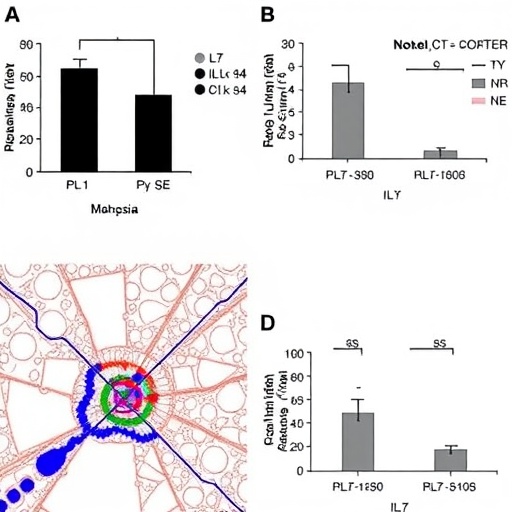
A groundbreaking study published recently in The Annals of Thoracic Surgery, the esteemed journal affiliated with The Society of Thoracic Surgeons, has revealed significant advancements in the prenatal detection of congenital heart disease (CHD). This improvement is largely attributed to refined ultrasound screening techniques that have become more sophisticated over recent years. The research elucidates how the integration of specific cardiac views during routine prenatal scans has empowered clinicians to identify a broader spectrum of fetal heart anomalies well before birth, thus marking a pivotal step forward in prenatal diagnostics.
The landscape of prenatal CHD detection has seen steady improvement over nearly two decades, spanning from 2006 to 2023. This upward trajectory closely correlates with the introduction of enhanced ultrasound screening guidelines, particularly those updated in 2013. Notably, these guidelines emphasized the utilization of outflow tract views—beyond the traditional four-chamber heart view—which has demonstrated a profound impact on identifying lesions previously missed during routine assessments. The study distinctly shows that lesions not typically observable on a standard four-chamber view now enjoy better detection rates, signaling a paradigm shift in prenatal cardiac imaging.
Despite this encouraging progress, the investigation highlights persistent disparities in prenatal detection rates, which vary markedly by geographic region and by the type of heart defect encountered. Dr. Jeffrey Jacobs, the study’s lead author and a professor of surgery and pediatrics at the University of Florida, underscores this point by noting that these regional differences reflect enduring inequalities in access and quality of prenatal care within the United States. Such disparities call for focused interventions aimed at standardizing diagnostic protocols and ensuring equitable training for sonographers across diverse healthcare settings.
The study leveraged a vast dataset drawn from the STS Congenital Heart Surgery Database, amassing over 100,000 cases of infant heart surgeries gathered over a span of 17.5 years. By comparing prenatal detection rates before and after the 2013 ultrasound guideline update, researchers were able to dissect trends by year, anatomical defect type, geographical area, and imaging method employed. This comprehensive analysis allowed for an unprecedented evaluation of how clinical practice changes influence diagnostic accuracy and patient outcomes on a national scale.
The core of these advances pivots on the deployment of enhanced imaging techniques during obstetric ultrasounds. Traditional fetal heart evaluation largely focused on the four-chamber view, which often missed complex outflow tract abnormalities. However, the addition of views capturing the left and right outflow tracts, including the aortic and pulmonary arches, has increased the sensitivity and specificity of prenatal CHD detection. These technical improvements in sonographic protocols demand specialized training and keen expertise, positioning sonographers as critical frontline practitioners in improving congenital disease prognosis.
Nonetheless, the study identifies that certain lesion types remain notoriously difficult to diagnose prenatally despite improved imaging capabilities. Complex cardiac malformations involving subtle outflow obstructions or intricate vascular anomalies still evade early detection at concerning rates. This underscores an ongoing need for continued innovation in both ultrasound technology and interpretive skills, highlighting an urgent call to action in the obstetric and pediatric cardiology communities to refine screening protocols further and invest in advanced training programs.
Importantly, the research raises compelling questions about the downstream impact of earlier CHD detection on clinical outcomes. While prenatal diagnosis provides a valuable head start for family counseling, delivery planning, and immediate postnatal care, the study advocates for further investigation to quantify how these earlier identifications influence surgical timing, mortality, morbidity, and long-term neurodevelopmental health. Understanding these relationships is crucial for optimizing care pathways and justifying the allocation of resources toward prenatal screening initiatives.
Equity emerges as a central theme throughout the study’s findings. The variability in detection rates signals unequal access to high-quality ultrasound imaging and experienced sonographers across different U.S. regions and healthcare systems. As prenatal screening guidelines continue to evolve, ensuring equitable dissemination of knowledge and technology will be vital to closing these gaps. Dr. Jacobs emphasizes that expanding the availability of specialized training and resources, particularly in underserved areas, is essential to minimize disparities in CHD diagnosis and care.
The study’s methodology, grounded in a robust analysis of the STS Congenital Heart Surgery Database, offers a model for future epidemiological research in congenital disorders. By systematically correlating clinical practice changes with outcome data over a prolonged timeframe, researchers can track the real-world effectiveness of guideline updates while identifying areas needing improvement. This data-driven approach sets a new standard for monitoring progress in prenatal diagnostics and can be extrapolated to other congenital conditions.
For clinicians and healthcare systems, these findings serve as a clarion call to revisit prenatal ultrasound protocols and enhance the training of sonographers to include the latest cardiac views recommended by guideline committees. Health authorities and policy makers can also leverage this evidence to promote consistent, high-quality prenatal screening programs nationwide. Ultimately, these efforts aim to facilitate timely, accurate diagnoses that foster optimal neonatal care, thereby potentially reducing the burden of CHD on affected families and the healthcare system.
As the medical community absorbs these insights, the study advocates for ongoing research to address the unanswered questions pertaining to outcomes and screening equity. Technological advancements such as three-dimensional ultrasound and fetal echocardiography integrated with artificial intelligence may represent the next frontier in prenatal cardiac diagnosis. Embracing such innovations, alongside committed efforts to standardize training and access, may herald a future where prenatal CHD detection becomes both universally available and highly precise.
In conclusion, this landmark study published in The Annals of Thoracic Surgery highlights transformative advances in prenatal CHD detection driven by refined ultrasound screening protocols, especially the inclusion of detailed outflow tract imaging. However, it also shines a spotlight on persistent challenges related to regional disparities and certain underdetected lesion types. As prenatal screening guidelines continue to evolve, ensuring equitable access to quality imaging and expert interpretation remains paramount to improving outcomes for infants born with congenital heart disease. The medical community stands at a pivotal moment, armed with robust evidence to propel prenatal diagnostics toward more reliable and inclusive standards globally.
Subject of Research: Prenatal detection of congenital heart disease (CHD)
Article Title: Variation of Prenatal Detection of Congenital Heart Disease in Infants: Updated Analysis of The Society of Thoracic Surgeons Congenital Heart Surgery Database
News Publication Date: 2-Sep-2025
Web References:
https://www.annalsthoracicsurgery.org/article/S0003-4975(25)00658-7/abstract
http://dx.doi.org/10.1016/j.athoracsur.2025.06.049
References: The study utilizes data from the STS Congenital Heart Surgery Database and ultrasound guidelines updated in 2013.
Keywords: congenital heart disease, prenatal screening, ultrasound, outflow tract views, fetal echocardiography, congenital disorders, birth defects, medical diagnosis, clinical trials
Tags: advancements in ultrasound screeningcardiac imaging techniquescongenital heart disease diagnosticsfetal heart anomaly identificationfour-chamber heart view limitationsimpact of ultrasound technology on healthcareimprovements in prenatal diagnosticsoutflow tract views in ultrasoundprenatal heart defect detectionprenatal screening guidelinesregional disparities in prenatal careThe Annals of Thoracic Surgery study




